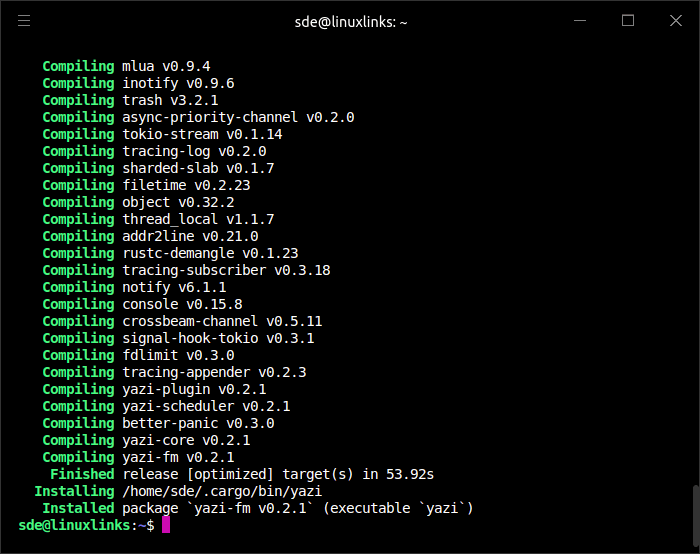A file manager is software that provides a user interface to undertake file management activities with file systems. Common operations performed on files or groups of files include create, open, rename, move, copy, delete, search/find, edit, view print, play, as well as modify file attributes, properties and file permissions. The file manager is one of those essential applications for many users which is almost impossible to function without. Linux is blessed with a good range of file managers that help to make file management a breeze.
Yazi is billed as a blazingly fast TUI file manager with asynchronous support. This is free and open source software.
Installation
We tested Yazi on Ubuntu 23.10. There isn’t a deb package available, so we’ll install Yazi using cargo, Rust’s package manager.
We already have an installation of rustup on our system. But building Yazi failed with it. So first, we uninstalled it with the command:
$ snap remove rustup
Now we can install rustup with the command:
$ curl --proto '=https' --tlsv1.2 -sSf https://sh.rustup.rs | sh
To get started we restarted our current shell.
Now we can install yazi-fm wit the command:
$ cargo install --locked yazi-fm

Yazi can be optionally extended with other command line tools to enable additional features.
- Nerd Fonts – an iconic font aggregator, collection, and patcher.
- ffmpegthumbnailer – a lightweight video thumbnailer.
- unar – for archive preview.
- jq – a lightweight and flexible command-line JSON processor.
- Poppler – a library for rendering PDF files, and examining or modifying their structure.
- fd – searches for files in a directory hierarchy. It offers a number of notable improvements to the venerable find.
- ripgrep – recursively searches directories for a regex pattern while respecting your gitignore
- fzf – a general-purpose command-line fuzzy finder.
- zoxide – a smarter cd command, inspired by z and autojump which features in our top 100 CLI apps.
Next page: Page 2 – In Operation and Summary
Pages in this article:
Page 1 – Introduction and Installation
Page 2 – In Operation and Summary
